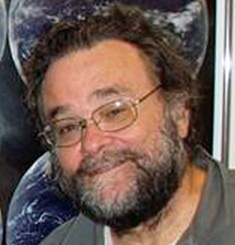The Retirement of Max Suarez
01.25.2018
In December of 2017, Dr. Max Suarez retired after more than 30 years of service to NASA and to the broader scientific community.  Max’s remarkable career is marked by far-reaching and long-lasting contributions to the various Earth System Modeling communities, to scientific research and application communities, to NASA instrument teams, and to software infrastructure and computational communities relevant to geophysics.
Max’s remarkable career is marked by far-reaching and long-lasting contributions to the various Earth System Modeling communities, to scientific research and application communities, to NASA instrument teams, and to software infrastructure and computational communities relevant to geophysics.
Max joined Goddard in the early 1980s as part of the Laboratory for Atmosphere’s Modeling and Assimilation Branch, and ever since that time he has been at the forefront of Goddard’s climate modeling efforts. He helped lead the Coupled Climate Dynamics group in the early 1990s, the NASA Seasonal-to-Interannual Prediction Project (NSIPP) in the mid-to-late 1990s, and, when the Global Modeling and Assimilation Office was established in 2003, Max served as Lead Scientist for Modeling.
Throughout his time at NASA GSFC, Max spearheaded the development of modern general circulation models from the perspective of both efficient coding and the accurate representation of physics, and his efforts ensured that the GMAO model (GEOS) and its associated assimilation systems were constantly state-of-the-art. His influence was a major factor in the success of the Modern-Era Retrospective analysis for Research and Applications (MERRA) and its follow-on, MERRA-2. Overall, Max had the unusual ability to understand how each piece of the model fitted together and to simultaneously understand the performance of the model as a complete entity — simply put, for such a complex system, it is not common that a single person can see the entire “forest” as well as the individual “trees.”
Max’s contributions, however, transcend Goddard. Max has made critical contributions to many physical parameterizations (e.g., for convection and radiation) that are still used throughout the scientific community and he developed (jointly with Isaac Held at GFDL) methodologies for the inter-comparison of AGCMs' dynamical cores. He deserves substantial credit for initiating the Earth System Modeling Framework (ESMF) project and for showing leadership in the community by adopting ESMF in the comprehensive GEOS chemistry-climate modeling and assimilation systems. The ESMF is indeed now a fundamental part of almost all general circulation models and Earth system models used in this country.
On the scientific side, Max developed (with Paul Schopf) the “delayed-action oscillator” theory that explained, for the first time, the preferred 3-7 year frequency of the El Niño phenomenon. The set of three papers documenting the theory remains a highly important body of work for understanding El Niño dynamics.
While Max's contributions to GMAO systems and his influence throughout the Earth Sciences community cannot be overstated, it is his dedication and commitment to the development of the next generation of scientists and engineers that will carry his legacy well into the future. His direct contribution in the GMAO will be sorely missed, but his influence on our science will be long lasting. Among his colleagues in the GMAO, it is perhaps his scientific modesty and generosity, combined with his infectious sense of humor, that will be missed most of all.

